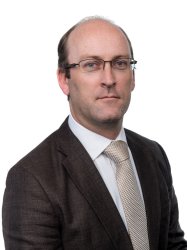Overview
Development of Empirical Ground-Motion Models
Development of empirical models for measure of earthquake-induced ground-shaking using physically based functional forms and modern regression and optimization procedures. Research to date has focused upon the development of models for the following ground-motion measures:
- Fourier amplitude spectrum
- Arias intensity
- Pseudo-spectral acceleration
- Strong-motion Duration (Significant, Bracketed and Uniform)
- Response spectral ordinates for damping ratios other than 5% of critical
Probabilistic Seismic Hazard Analysis (PSHA)
Application and development of state-of-the-art procedures for conducting probabilistic seismic hazard analyses. Current interest in implementing Vector-valued PSHA for combinations of ground-motion measures.
Scaling & Matching of Earthquake Accelerograms
Development of methods for selecting, scaling, modifying and matching natural earthquake accelerograms for input into structural time-domain analyses. Current work is focussed upon the characterisation of the distribution of inelastic response due to accelerograms selected on the basis of various scaling and matching criteria.
Earthquake Loss Estimation
Development of methodologies for regional earthquake loss estimation. In particular, refining current approaches to portfolio risk assessment.
Stochastic Modelling of Seismic Response
This work is concerned with the stochastic characterisation of earthquake strong-ground motion for use within probabilistic methods for estimating structural response. Stochastic characterisations of earthquake ground-motion offer many statistical benefits over their natural counterparts but are often viewed with a significant degree of skepticism. This skepticism arises largely from the inability of current stochastic approaches for generating artificial accelerograms to fully capture the true nature of earthquake ground-motion. The research underway on this issue aims to refine existing approaches for the stochastic characterisation of earthquake excitation.
Research Staff
Research Student Supervision
Alarcon,JE, Estimation of Duration, Number of Cycles, Peak Ground Velocity, PGA and Spectra. Completed
Aldama Bustos,G, Exploratory Study of Parameter Sensitivity, Representation of Results for PSHA. Completed
Arumugam,A, Motions from global subduction zone earthquakes and seismic risk analysis for Malaysia. Commenced
Dong,W, Topology, Stability and Robustness of Tensegrity Structures
Dorra,E, An earthquake economic loss model for Egypt: national and international implications. Completed.
Foulser-Piggott,R, The impact of ground motion uncertainty on earthquake loss estimation. Completed.
Garcia Troncoso,N, Structural response and design criteria of footbridges with tuned mass dampers
Georgadis,K, Response of under-deck cable-stayed bridges to pedestrian excitation
Kumar,M, Inelastic Seismic Response Assessment of Moment Resisting Steel Frames. Completed.
Lessi,A, Optimal treatment of nonlinear site response within probabilistic seismic hazard analysis. Commenced.
Mendis,R, The Re-evaluation of Earthquake Actions for Displacement-based Seismic Design. Completed
Modica,A, Implementation of vector fragility functions within Earthquake Loss Estimation. Completed.
Molkenthin,C, Sensitivity analysis in seismic hazard assessment using algorithmic differentiation
Muñoz Heinen,L, Coupling of SSC and GMC components of physics-based hazard analyses using advanced friction models
Neill,S, Uncertainty quantification of physics-based simulations for ground motion prediction in probabilistic seismic hazard analysis
Ramos,C, Structural behaviour and design criteria of innovative footbridges. Commenced.
Sgobba,S, An evolutionary stochastic ground-motion model for stochastic structural dynamics. Completed.
Shi,Y, Ground motion selection for generalised conditional intensity measure targets and the target construction
Singh Bora,S, Computation of response spectra from an adaptive Fourier spectrum perspective. Commenced.
Skiada,E, Consistent incorporation of topography effects into ground motion prediction equations
Tallett-Williams,S, Site classification for seismic hazard assessment in low seismicity regions
Teslim-Balogun,A, Structural response of tall steel buildings to post-blast fires
Tsingopoulou,P, Enhanced characterisation of ground-motion for Earthquake Loss Estimation. Commenced
Xu,B, Seismic behaviour of structures incorporating high deformability concrete

